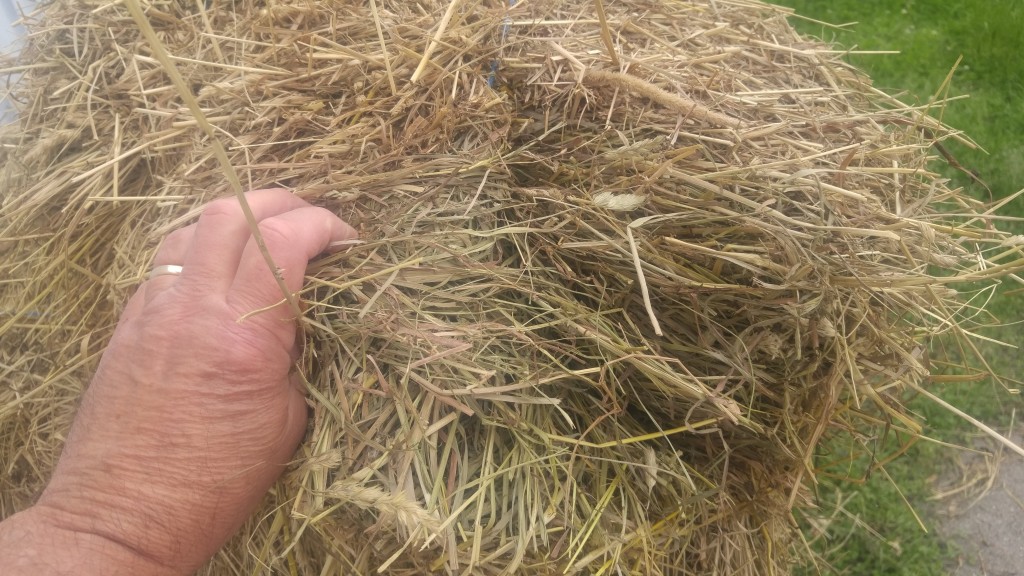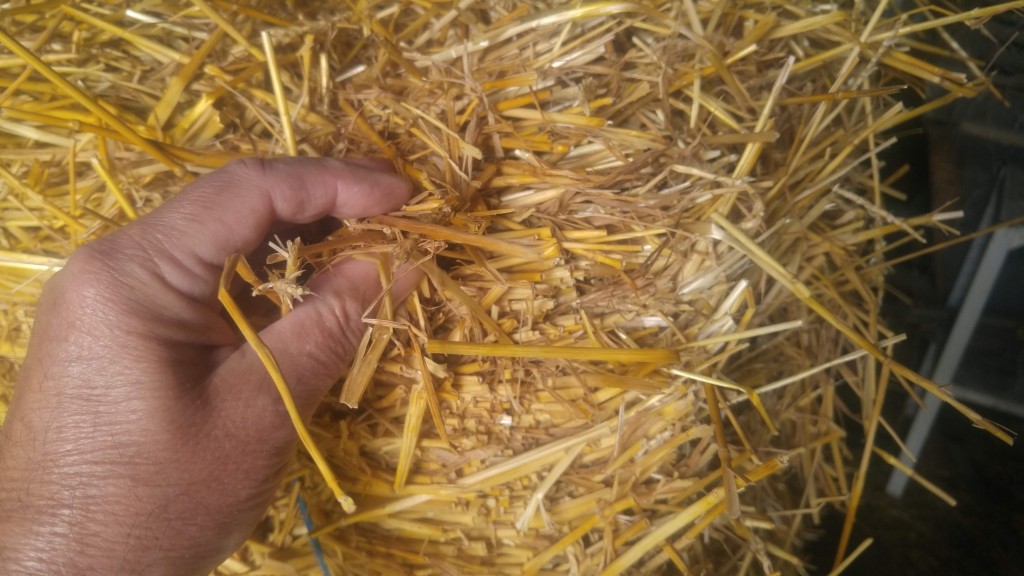Nowadays people use the terms hay and straw interchangeably and in most cases it makes no difference whatsoever. For example we say we were on a hayride at a get together even though the wagons are filled with straw rather than hay. Straw ride just doesn’t have the same ring to it.
In a garden however, getting the two confused can lead to problems in the future. Hay and straw are often both used as weed control mulch in the garden but the results you get can be quite different.
Hay is a crop that is grown and harvested as a feed crop for cattle, horses and other farm animals. Straw on the other hand is a byproduct of a grain crop, in our area it’s usually usually wheat straw that we see.
Why would that make a difference to us in the garden? The problem lies with hay. Hay often is made up of a combination of different plants growing in a field or meadow. Farmers will cut and bale the plants in a field like that to feed to dairy cows that are in their resting stage, called dry cows. That kind of hay is of low quality and is less nutritious than say alfalfa hay but that is fine for dry cows because they don’t require dense nutrition when they’re not producing milk.
You never know what plant combination you’ll get in a random bale of hay. More often than not they contain weeds that you can inadvertently introduce to your property. I’ve seen such tenacious perennial weeds like thistle come into a garden as a result of their seeds hiding inside a bale of hay.
Straw on the other hand, is much better for use as a garden mulch. Since wheat and other grain crops are so competitive in a field, they suppress the growth of many weeds. Farmers also will control weeds one way or another to ensure the highest yields they can get of valuable grain. That results in straw with no or very little weed contamination.
Granted, there are exceptions to the rule. You can find weed-free hay such as one hundred percent alfalfa or timothy but these can be expensive. Sometimes straw can be highly contaminated with weeds if it was grown in less than optimum conditions.
Be aware of the difference between hay and straw when shopping for mulch.
Composting hay can reduce the number of weed seeds to a minimum but that has to be done the right way in order for the compost to reach a high enough temperature to kill the seeds. I’d be wary of composted hay unless you’re sure of how it was composted.
Sometimes you’ll see “spoiled hay” that may be high quality hay that was left outside in the weather and began to get moldy making it unacceptable as a livestock feed. That can be okay for use in the garden if you know it came from quality hay.
Bob

